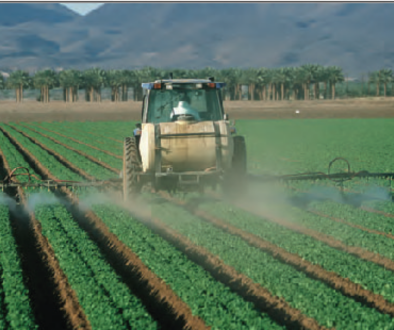Breaking Research: Emerging Science Highlights Serious and Growing Health Risks That Herbicides Pose to Women & Children

New evidence presented today at a pediatric research conference in Washington D.C. highlights growing concern over sharply rising herbicide use and risks to pregnant women and children, especially those living in the rural Midwest.
The research comes from two experts that I have known for over a decade and long admired for their courage and tenacity.
I was first introduced to Charles Benbrook, PhD, back in 2006, and to Dr. Phil Landrigan of the Children’s Environmental Health Network as a board member of Healthy Child Healthy World. Dr. Landrigan and I worked together on an advisory council for Governor Cuomo of New York.
So when they reached out and asked for help sharing their latest research, I did not hesitate. Charles Benbrook said, “It won’t be popular in some circles.” The truth rarely is.
Please read and share this important breaking research.
CEHN Research Conference voices alarm over rising herbicide use and risks pregnant women and children
New evidence presented today at a pediatric research conference in Washington D.C. highlights growing concern over sharply rising herbicide use and risks to pregnant women and children living in the rural Midwest.
Key findings and insights from peer-reviewed research conducted over the last 20 years were presented at the biennial 2017 Children’s Environmental Health Translational Research Conference sponsored by CEHN (Children’s Environmental Health Network).
In a panel titled “Will Rising Herbicide Use in the Midwest Raise Reproductive Risks?”, researchers presented new evidence showing that most Americans are now exposed on a near-daily basis to herbicides widely used on corn and soybean fields. This is because of recent changes in when and how herbicides are applied.
One study of pregnant women in an Indiana obstetric practice found glyphosate (aka Roundup) in the urine of over 90% of test subjects. According to the lead scientist, Dr. Paul Winchester, “In our study, which is ongoing, mothers with relatively higher levels of glyphosate were more likely to have shorter pregnancies and deliver babies with lower birth-weight, outcomes that everyone should be concerned about.”
In his presentation at the CEHN Research Conference, Dr. Winchester points out that “Shorter pregnancies with relatively lower birth weights have been linked to lower cognitive ability later in life and higher risk of metabolic syndrome.”
Dr. James Roberts, chairman of the CEHN Board, explained that “Our goal in this project, as in all CEHN activities, is to support and assure the health of children, from conception through pregnancy and birth, and throughout early growth and development.”
Resistant Weeds Driving Herbicide Use Upward
Research shows that the ongoing spread of weeds resistant to glyphosate in the Midwest is triggering intensification of herbicide use. Ten years ago, most soybean fields were sprayed with one or two herbicides. Four or more herbicides will be applied by most soybean growers in 2017, and some of these herbicides will be sprayed more than once.
Herbicide use is likely to continue rising for several years, because the Environmental Protection Agency has recently approved several crops genetically engineered (GE) to resist (i.e. survive) applications of multiple herbicides. These next-generation GE crops are designed to increase reliance on, and use of specific herbicides.
Around 40 million acres of corn and soybeans will be planted in 2017 to new GE corn and soybean varieties, acres that will be sprayed with combinations of glyphosate (Roundup), glufosinate (Liberty), 2,4-D (EnlistDuo), dicamba (XtendiMax and Engenia), and several other herbicides.
Rates of application are also rising sharply for some herbicides. Overall soybean herbicide use will, on average, more than double in 2017 compared to 2001.
In addition, “Until this year, most herbicides in the Midwest were sprayed during a six-week window, but now the heavy herbicide spray season will last at least four months, placing more women and children at heightened risk,” explained science team member Dr. Phil Landrigan, Dean for Global Health at Mt. Sinai Medical School.
As a result, the risk of reproductive problems and adverse birth outcomes will rise among women and children living in rural areas, according to the panelists.
The Healthy Kids project will be a clearing house of information about the connection between herbicide use and health risks. Peer-reviewed studies conducted in rural areas since the 1990s report that the risk of herbicide-induced reproductive problems like spontaneous abortions and failure to conceive are greatest when the heavy, herbicide spray season coincides with the time-period spanning one month prior to conception and through a woman’s first trimester of pregnancy.
The project website: www.cehn-healthykids.org offers extensive information on trends in herbicide use, the role of glyphosate-resistant weeds in driving herbicide use upward, health risks, and public and private sector actions needed to prevent an increase in adverse birth outcomes in the years ahead.
To Schedule an Interview With Science Team Members Contact – Elizabeth Horton, [email protected], or call (207) 838-0084.
Access Research Conference Presentations at – http://cehn-healthykids.org/resources/project-work-products/
See the Herbicides in the Midwest Project Website for More Information – http://cehn-healthykids.org
About CENH
The Children’s Environmental Health Network is a national multi-disciplinary organization whose mission is to protect the developing child from environmental health hazards and promote a healthier environment. Today, CEHN is the voice of children’s environmental health in the nation’s capitol, one that is uniquely informed by a strong basis in pediatric and environmental health science.
To achieve this mission, the Network has had several goals:
- To promote the development of sound public health and child-focused national policy
- To stimulate prevention-oriented research
- To educate health professionals, policy makers and community members in preventive strategies
- To elevate public awareness of environmental hazards to children
For more on CEHN’s ongoing projects and activities, see www.cehn.org





